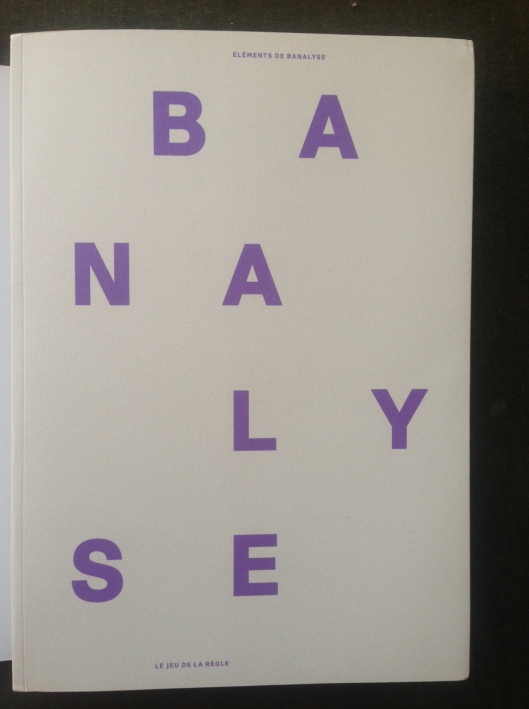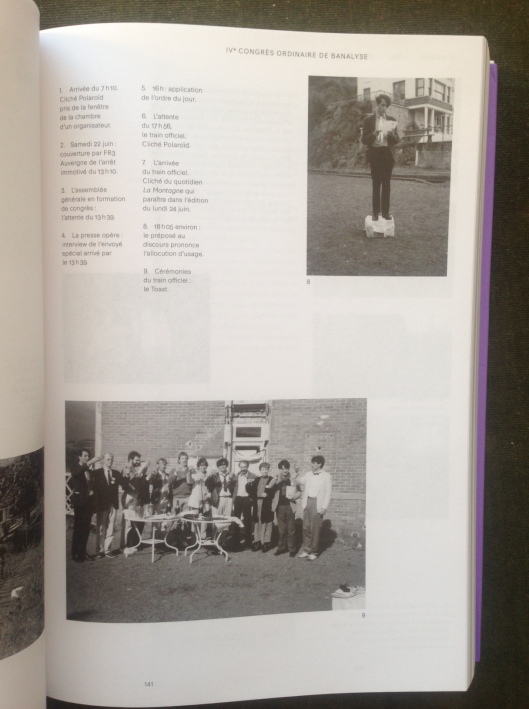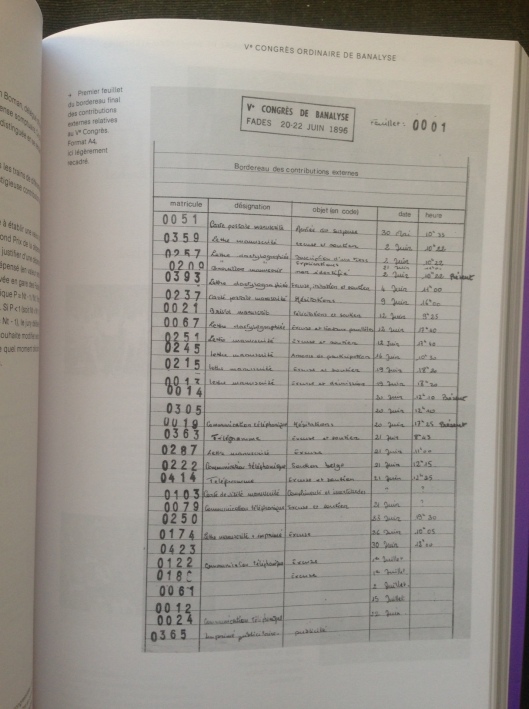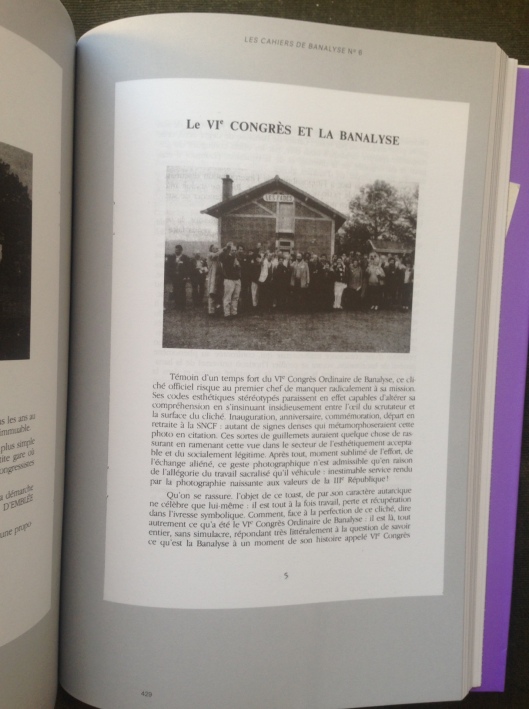Clavreul, Marie-Liesse and Thierry Kerserho (Ed.). Éléments de banalyse. Caen: Editions Le Jeu de la Règle, June 2015. 1 vol. (561 + XLIV p.); profusely illustrated.; 29 x 20 cm.; purple wrappers with text in white. With a preface by Pierre Bazantay and Yves Helias, co-founders of the Congrès Ordinaire de Banalyse.
This is the first book published on the (artistic/political/otherwise uncategorizable) movement known as the Banalyse. As stated in the Avertissement by the editors: “This first work on the banalyse movement is published over twenty years after the last meeting in Fades. [This is] a truly remarkable fact in our era of speed and saturation: to this day, with the exception of the banalystes themselves, few are those who have been able to get some first-hand information [on the Banalyse], while many others certainly believed that this movement had left only a few traces. Everything seemed in place for a legend to be perpetrated amongst a few amateurs, or for forgetfulness to win over. This book seeks to defeat both alternatives.” (p. XI, translation is mine)
But what is the Banalyse, and why does it matter? I have translated a short introduction from the publisher (it can be found here; http://www.lejeudelaregle.fr/skin2014/frame3.php): “Under the auspices of the Cahiers de Banalyse, Pierre Bazantay and Yves Helias founded, in 1982, the Ordinary Congress of Banalysis. The principle was such: participants were to join the Congress, which took place on the tracks of a small train station called Les Fades, in the Puy-de-Dome (France). However, the only activity scheduled for the aforementioned Congress consisted in waiting for other participants who had yet to arrive via train…In accordance with the upfront commitment, the Congress occured every year for 10 years, on the third weekend of June. The Congress stood as the first example of a type of propositions that combined an experimental perspective on the banal and critical outlook of institutions” (translation is mine)
Ralph Rumney was one of the most noteworthy participants in the Banalyse. In many ways, the movement was heavily inspirated by psychogeography. In fact, at a conference on psychogeography, Situationist scholar Pierre Marcolini gave a talk called “pychogéographie et banalyse” where he explores the parallels between the two movements. For more about Rumney’s involvement with Banalyse, one may read “Sur le Passage de l’invite 889 a travers la banalyse” (http://www.homme-moderne.org/images/peintr/rrumney/helias99.html) You may also consult my earlier post on Rumney’s “Pourvu que ca dure” sur le passage de quelques idees a travers le temps”, published in 1999 by the Bureau des Inspections Banalytiques: https://situationnisteblog.wordpress.com/2015/08/16/pourvu-que-ca-dure-sur-le-passage-de-quelques-idees-a-travers-le-temps-1999/
The book is available from Editions Le Jeu de la Regle. 1,300 copies were printed. http://www.lejeudelaregle.fr/skin2014/frame3.php





